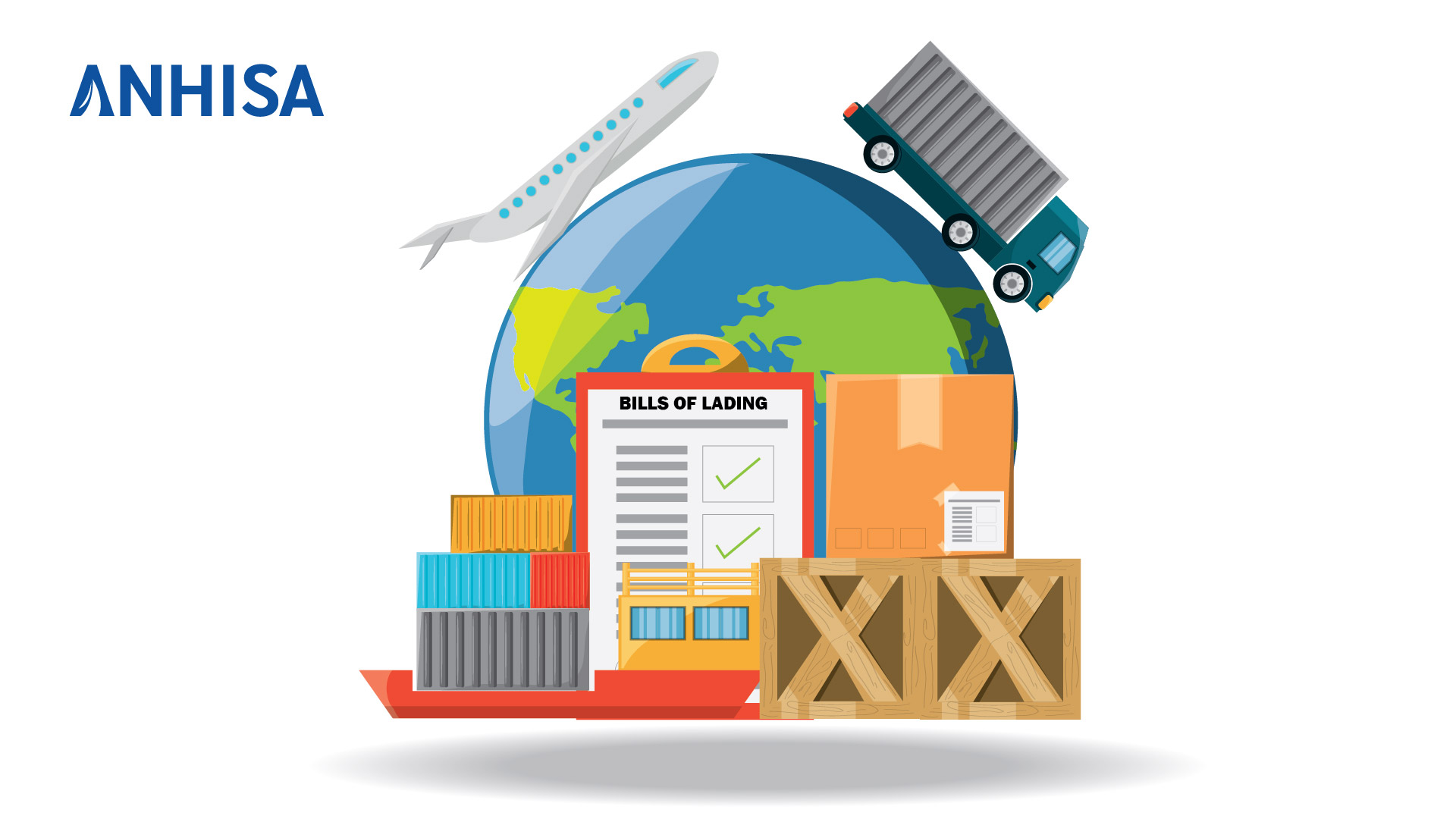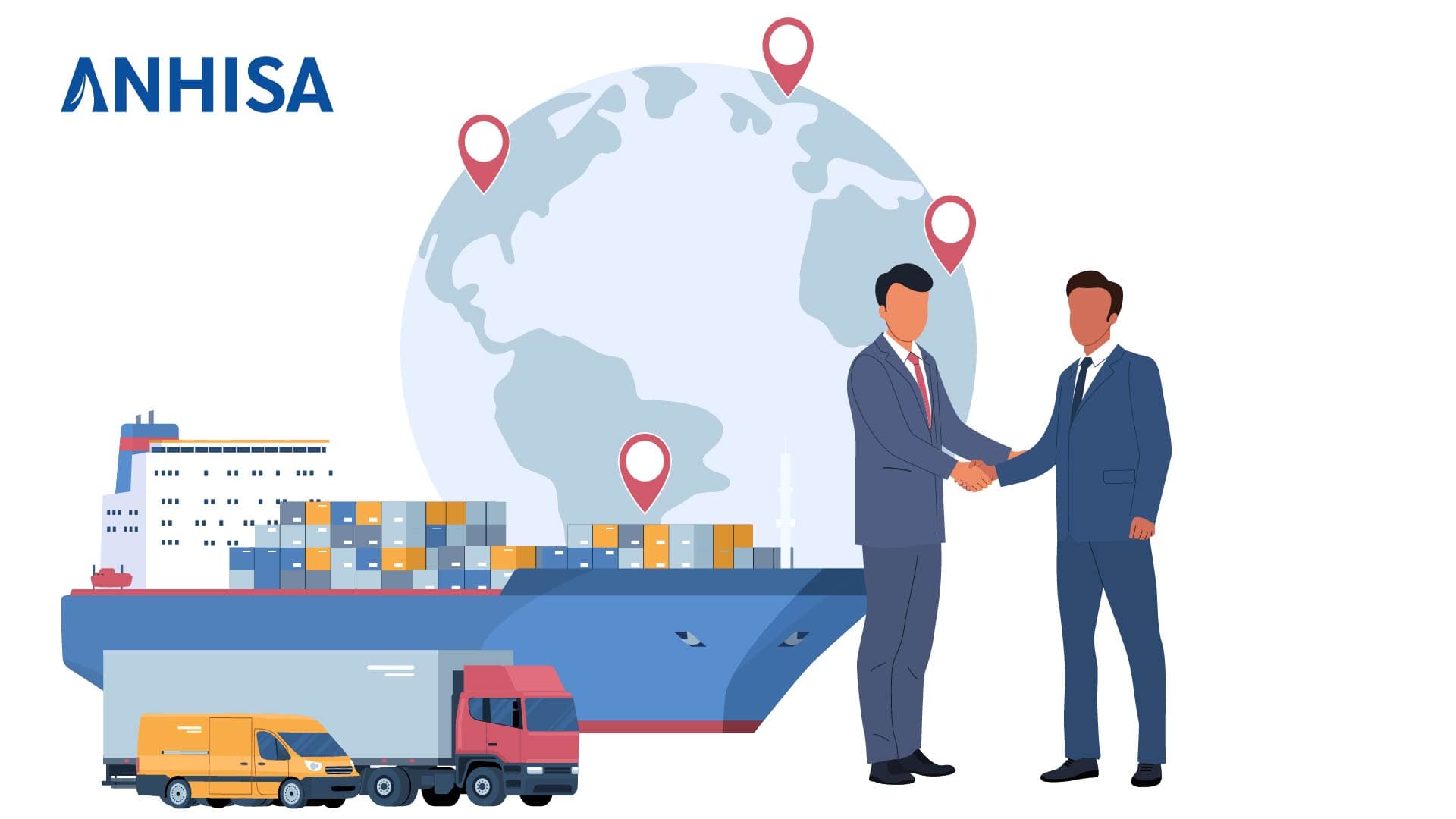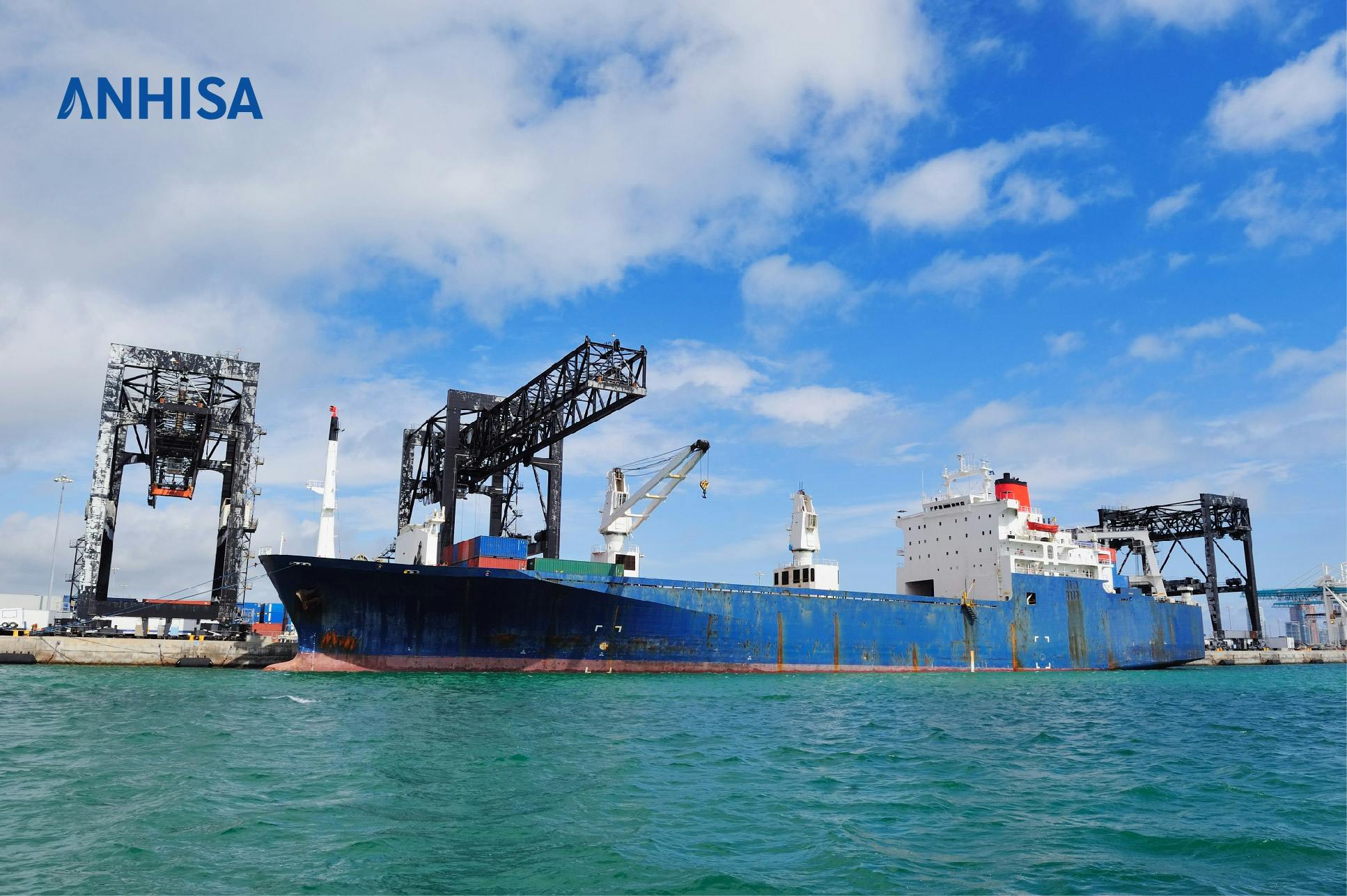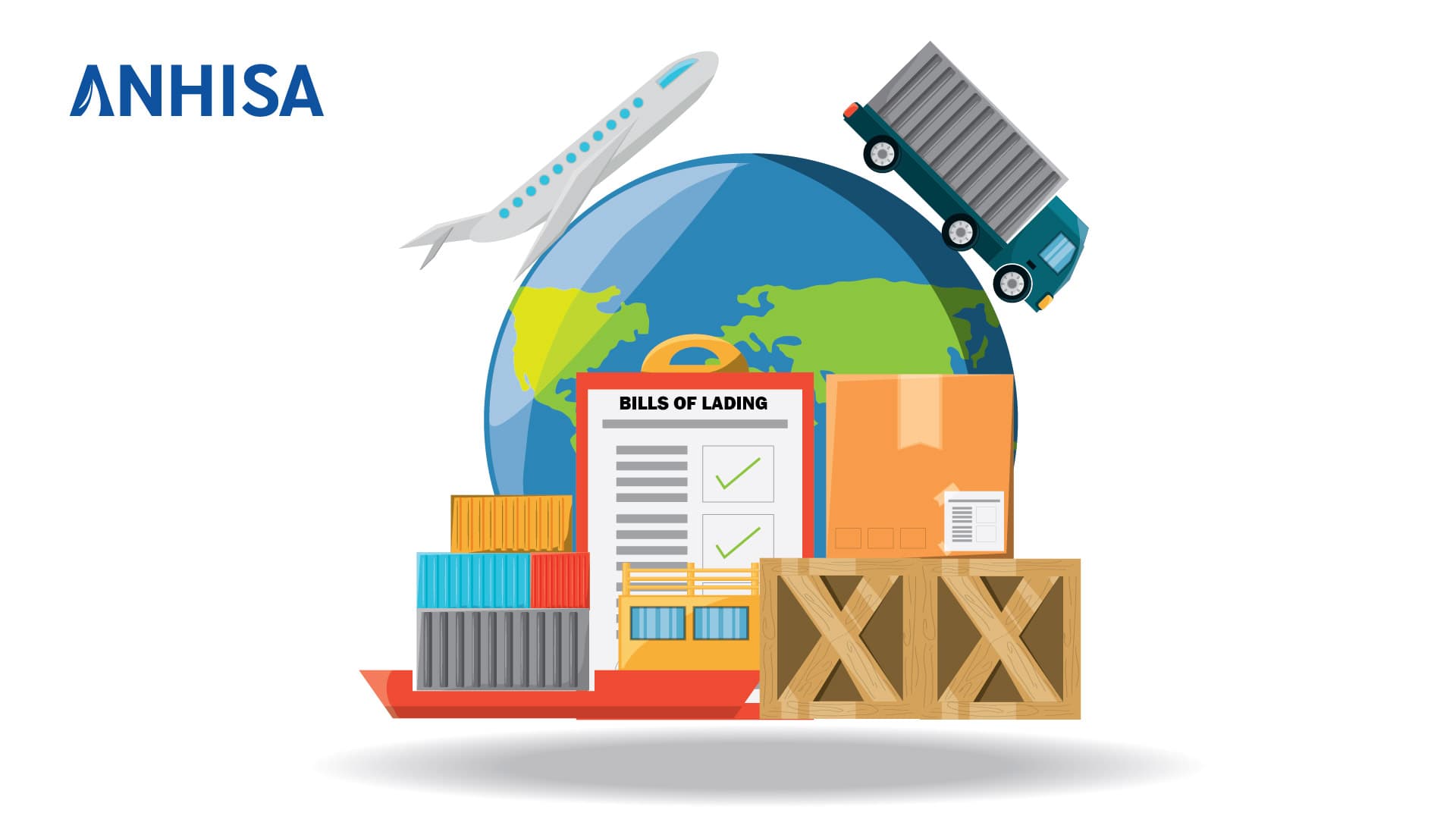Bills of Lading: Importance for International Shipping
March 19, 2024
Traditionally, bills of lading were paper-based documents that accompanied shipments. They contained crucial information such as the shipping line, invoice details, and whether freight was prepaid or not. However, with the advent of technology, electronic bills of lading have gained prominence. These digital counterparts offer convenience and efficiency by eliminating the need for physical paperwork while maintaining legal validity.
In today’s interconnected world of international trade, bills of lading are indispensable tools for companies engaged in global commerce. Whether it’s an original bill or an electronic one, these documents provide assurance and transparency throughout the supply chain.

Definition and Purpose
A bill of lading is a legally binding document issued by the carrier that acknowledges the receipt of goods and outlines the terms of transportation. It serves several important functions, ensuring accountability and protecting the interests of all parties involved.
Proof of Receipt and Ownership
A bill of lading provides proof that the carrier has received the goods. It acts as evidence that the goods have been loaded onto a vessel or other mode of transport, establishing a clear starting point for their journey. This document also establishes ownership rights over the goods during transit.
Terms and Conditions
The bill of lading sets out the terms and conditions agreed upon between the shipper (the party sending the goods) and the carrier (the party responsible for transporting them). It includes details such as the destination port, shipping route, delivery instructions, and any special requirements or handling instructions for certain types of cargo.
Documenting Information
Another important function of a bill of lading is to serve as an official record that captures all relevant information about the shipment. This includes details about the type and quantity of goods transported, their weight or volume, packaging specifications, and any marks or numbers used to identify them. The bill of lading also identifies who should be notified upon arrival at the destination port.
Ensuring Legal Compliance
Bills of lading are governed by international conventions and national laws that regulate maritime commerce. They provide legal protection for both shippers and carriers by clearly defining their respective rights, obligations, and liabilities in case disputes arise during transportation.
Express Release vs Original Bill
There are different forms of bills of lading depending on how they are issued. An original bill requires physical possession for transferring ownership rights over the goods. In contrast, an express release allows for faster processing as it does not require physical delivery but rather relies on electronic systems to transfer ownership.
Types and Examples
There are different types of bills of lading that serve various purposes in the shipping industry. Let’s take a look at some examples:
Straight Bill of Lading
A straight bill of lading is a non-negotiable document consigned to a specific party, usually the buyer or the consignee. It states that the goods are to be delivered directly to the named party and cannot be transferred or assigned to anyone else. This type of bill of lading is commonly used when there is no need for multiple parties to control the shipment.
Order Bill of Lading
On the other hand, an order bill of lading can be transferred through endorsement or delivery order. This means it allows for transferring ownership or control of the goods during transit. The original holder can endorse it to another party, who then becomes entitled to receive or redirect the shipment. This type offers more flexibility and convenience when transferring goods between different parties.
Through Bill of Lading
A through bill of lading covers multiple modes of transport, such as land, sea, and air. It is used when transporting goods using different carriers or methods throughout their journey. This type ensures seamless transportation from origin to destination by providing a single document encompassing all journey legs.
These are just a few examples illustrating how bills of lading can vary in their purpose and functionality within the shipping industry. Understanding these types can help shippers and recipients navigate their responsibilities and rights.
Remember, each type has unique characteristics and implications, so carefully consider which one best suits your specific shipping needs.
Importance in Shipping Logistics
The bills of lading play a crucial role in smoothly coordinating shipping logistics. They enable effective communication and tracking of cargo while also providing proof of ownership for financing purposes.

Facilitates Smooth Coordination between Shippers, Carriers, and Consignees
Bills of lading are essential documents that facilitate seamless coordination between shippers, carriers, and consignees involved in the shipping process. These documents outline the terms and conditions of the transportation agreement, including details about the goods being shipped, their quantity, destination, and any special handling instructions. By providing this information upfront, bills of lading ensure that all parties involved agree regarding the shipment requirements.
Enables Tracking and Tracing of Cargo Throughout the Supply Chain
One significant advantage of bills of lading is their ability to track and trace cargo throughout the supply chain. These documents contain unique identification numbers that allow stakeholders to monitor the progress of shipments from origin to destination. This visibility helps identify potential delays or issues along the way so appropriate actions can be taken to mitigate disruptions.
Provides Proof of Ownership for Financing Purposes
In addition to facilitating coordination and tracking, bills of lading serve as vital proof of ownership for financing purposes. When goods are transported internationally or domestically, banks or financial institutions often require documentation verifying ownership before extending credit or loans against those goods. Bills of lading provide this necessary evidence by clearly indicating who owns the goods during transit.
Role in Cargo Transportation
The bills of lading play a crucial role in the transportation of cargo. They are essential documents that specify important details about the goods being shipped. Let’s take a closer look at their role in cargo transportation.
Specifies Details of Goods
One of the primary functions of bills of lading is to provide specific information about the cargo being transported. These documents outline crucial details such as the goods’ quantity, weight, packaging, and condition. By clearly stating these particulars, bills of lading help ensure accurate and efficient handling throughout the shipping process.
Guides Customs Clearance Procedures
Bills of lading also play a vital role in guiding customs clearance procedures at ports or border crossings. These documents provide customs officials with necessary information regarding the contents and value of the cargo. This facilitates smooth and timely processing, reducing delays and potential complications during import or export operations.
Insurance Claims for Loss or Damage
In case of loss or damage during transit, bills of lading serve as essential evidence for insurance claims. When goods are insured, these documents help establish proof that the carrier received them in good condition. If any issues arise during transportation resulting in loss or damage to the cargo, bills of lading enable shippers to file claims with their insurance providers.
Legal Significance and Regulations
The legal significance and regulations surrounding bills of lading are crucial to understanding cargo transportation. These documents, which serve as receipts for goods being shipped, are governed by international conventions such as the Hague Rules or Hague–Visby Rules. National laws play a role in determining liability limitations and dispute resolution mechanisms.
International Conventions
Bills of lading are subject to international conventions that provide guidelines for their use and interpretation. The Hague Rules, adopted in 1924, were designed to establish uniform rules for bills of lading across different countries. They were later updated by the Hague–Visby Rules in 1968 to address certain shortcomings.
These conventions outline important aspects of bills of lading, including the carrier’s responsibilities, obligations regarding the care and delivery of goods, and liability limitations. They aim to ensure fair treatment for all parties involved in maritime transportation.
National Laws
In addition to international conventions, national laws also come into play. Each country may have its own legislation that further regulates these documents. For example, in the United States, the Carriage of Goods by Sea Act (COGSA) governs bills of lading used in international maritime trade.
National laws can address various aspects related to bills of lading, including signature requirements, numbering systems for tracking shipments, liability limits for carriers or shippers, and dispute resolution procedures.
Understanding international conventions and national laws is essential for anyone shipping goods internationally. Compliance with these regulations ensures that all parties are aware of their rights and obligations.
By adhering to these legal requirements and regulations surrounding bills of lading, businesses can navigate the complexities of global trade more effectively while safeguarding their interests.
The Significance of Bills of Lading – ANHISA – An international Law Firm based in Vietnam will help you!
In conclusion, bills of lading play a crucial role in shipping and logistics. They serve as vital documents that provide proof of ownership, outline the terms of transportation contracts, and facilitate the smooth movement of goods from one location to another. Businesses can ensure efficient cargo transportation while complying with regulations by understanding the definition, purpose, types, and legal significance of bills of lading.

If you need help with any issues related to bills of lading, feel free to contact us for a consultation. We are available to assist you.
Contact ANHISA via:
- Mr. Dang Viet Anh
- Email: anh@anhisa.com
- T: +84 28 5416 5873
- M: +84 983 467070
FAQs
What information should be included in a bill of lading?
A bill of lading should typically include details such as the names and addresses of the shipper and consignee, a description of the goods being transported (including quantity and weight), packaging information, shipment origin, and destination locations, freight charges, terms and conditions for transport, as well as any special instructions or requirements.
Can a bill of lading be electronic?
Yes! With advancements in technology and digitalization efforts within the shipping industry, electronic bills of lading (eBOLs) have become increasingly common. These digital versions offer convenience by reducing paperwork and enabling faster processing times.
What happens if discrepancies exist between the bill of lading and the cargo received?
Discrepancies between the bill of lading and the actual cargo received can lead to complications such as delayed delivery or disputes among parties involved. It is crucial to carefully inspect and compare the cargo against the information in the bill of lading upon receipt. Any discrepancies should be immediately reported to the relevant parties for resolution.
Are bills of lading negotiable?
Yes, bills of lading can be negotiable or non-negotiable. Negotiable bills of lading allow for the transfer of ownership rights through endorsement and delivery, while non-negotiable bills serve as receipts and do not grant ownership transfers.
What is a “clean” bill of lading?
A “clean” bill of lading refers to a document that contains no clauses or remarks indicating damage, loss, or irregularities with the goods being transported. It signifies that the cargo was received in apparent good condition and without any visible issues.
Related posts

Mediators’ Role in Alternative Dispute Resolution (ADR)
March 13, 2024
- EMAIL:
- om@anhisa.com
- office@anhisa.com
- TEL:
- Hanoi Office: +84 24 320 47609
- Saigon Office: +84 28 5416 5873
- HOTLINE:
- +84 (0) 939 117 398
- +84 (0) 983 488 380




